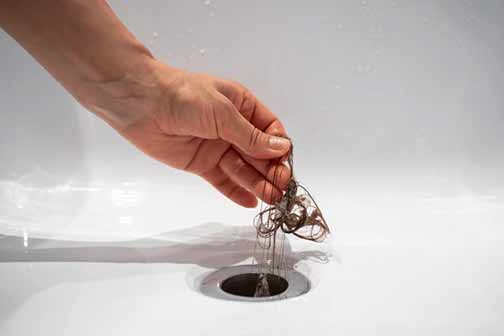
You just ended a refreshing soak in your bathtub, and now you are ready to get rid of the bath water. However, when you pull the stopper, nothing happens. Some of the water inside your bathtub flows into the drain and then stops. What’s going on, and what should you do with these kinds of bathtub drain problems?
A clogged bathtub drain is a common problem in homes, says Ravago Group. In most cases, the bathtub drain is not blocked. It is just slow. If you wait a few minutes, maybe the water inside the tub will start to drain away. But in the meantime, why does your bathtub drain clog?
- Hair and soap scum
The number one cause of a clogged bathtub is hair, especially if someone in the household has long hair. Hair can mix with soap residue to form a sticky ball that restricts water flow. This kind of blockage frequently happens just below the drain stopper.
- Mineral deposits from hard water
Your bathtub drain will be more susceptible to clogs and blockages if you have hard water. The high mineral content of hard water means that the rate of mineral buildup inside your pipes will be higher than normal.
- Old or damaged pipes
Rusty pipes may have rough surfaces that slow the water flow and encourage debris to settle inside the line. Corrosion also increases the rate of buildup by breaking down the pipe materials. Collapsed pipe sections may also restrict water flow.
- Foreign objects
Small items that accidentally slip into the drain opening can cause or accelerate clogs and blockages. Such small items include things like jewelry, tiny toys, etc. Dental floss can also lodge inside the drain and trap debris.
Solutions for a clogged or blocked bathtub drainage
- Do not use chemical drain cleaners
You may tempted to try and solve the problem with chemical drain cleaners. If you pour a chemical drain cleaner into the drain and flow is restored, great! However, if this fails to fix the problem and you have to use mechanical methods to solve the issue, the chemicals inside your pipes could endanger anyone working on your drains.
- Determine the location of the clog
You want to know if the clog is near the drain opening. Let the tub sit idle for a day (if you have the luxury of time), and with the drain open, start filling the tub with water. A nearby clog will have your tub filling up almost immediately. If it takes time to fill up, the clog is far down the line. A nearby clog is easier to solve.
- Remove the drain stopper
How you do this depends on the type of stopper in your bathtub. The most common types of bathtub stoppers are Lift-and-Turn, Toe-Touch, Push-Pull, or Pop-Up. Follow the correct steps for removing the particular type of drain stopper in your bathtub. To complete this step, you may need a screwdriver.
- Use an unclogging tool
- Use an old toothbrush: Stick an old toothbrush into the drain opening and twist it several times. If the blockage is near the opening, the toothbrush will snag a lot of hair and other debris. Pull the brush out, clean it, and repeat this step several times.
- Use a plunger
You need a standard sink plunger for this step, not a flange plunger. Place the plunger over the drain opening and ensure you have a tight seal. Push the handle down and pull up rapidly. This should create enough suction to free the debris inside the drainpipe.
- Use a drain snake
If you don’t have a drain snake in your home, you can get one at the local hardware store. Do not buy the cheapest drain snake. Insert the wire into the drain until it stops moving. Turn the handle several times to open the channel. If the wire starts moving further into the drain, feed more of it into the line until it stops again. Clamp the wire and turn the handle several more times. If it feels like the wire has caught something, pull it out and drop the debris into a bucket. Do this process as many times as needed. Run the water to see if your tub drains.
- Clean the sewer line
If your bathtub doesn’t drain properly after the above steps, the clog is probably inside the sewer line. To fix a clogged sewer line, you need more advanced tools. This is not something that you should try to do yourself. Professional sewer line cleaning includes the following steps: sewer camera inspection and sewer rodding or hydro jetting.
Finally, you want to take steps to prevent this problem in the future. How do you do that?
- Install a drain cover to keep hair, soap scum, and debris out of the bathtub drain.
- Flush the drain periodically with hot water or a baking soda/vinegar mix, followed by lots of water. If you have PVC pipes, do not pour hot water into your drains.
Lastly, you need a professional plumber to inspect and clean your drains periodically.